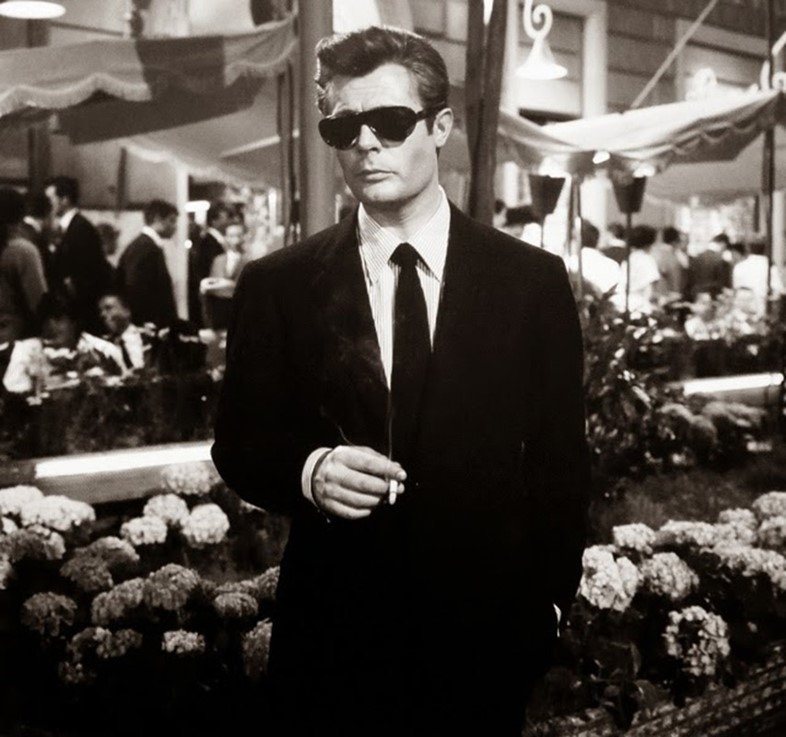As an Italian masterpiece returns to our screens, we pick our idols of Italian film and fashion design
The moment Anita Ekberg emerged out of the Trevi fountain, barely draped in a black ballgown, a kitten mewing on the sidelines, encompasses the blend of sensuality, fantasy and realism that has come to define cinematic Italian fashion. Through the work of fashion legends such as the Fontana sisters, Visconti’s right hand man Piero Tosi and icons such as Fendi and Karl Lagerfeld, fashion takes on symbolism and intensity, adding nuance to some of the most famous stories told on screen.
Nowhere is this more evident than in The Garden of the Finzi-Continis, director Vittorio De Sica’s version of Bassani’s novel depicting the last halcyon days of a wealthy Italian Jewish family blithely playing tennis in the 1930s sunshine, unaware that their world is about to be annihilated. Winning the Academy Award for best foreign film in 1972, the film has now been restored for modern audiences with the help of the Italian fashion house Antony Morato. To mark this effort, we select our favourite figures in Italian cinema and fashion, highlighting the fascinating figures who have worked to create some of cinema’s most iconic moments.

Roman Holiday – Edith Head & the Fontana sisters
The first Hollywood production to be filmed on location in Rome, William Wyler’s 1953 masterpiece saw 24-year-old Audrey Hepburn turn overnight from girl-next-door to international movie star and enduring fashion icon. While Hepburn’s wasp waist and dazzling smile certainly helped, it was the women behind the princess dresses who should take the most credit. They were created by a collaboration between American costume designer Edith Head and the Fontana sisters – a trio of fashion innovators, now known as the founders of modern Italian fashion. Hepburn herself was a big admirer of the Fontana’s craft – indeed, during filming, she commissioned them to make her wedding dress.

La Dolce Vita – Piero Gherardi
In Federico Fellini’s 1960s classic La Dolce Vita, with the elegant, tailored look of playboy celebrity journalist Marcello Rubini played by Marcello Mastroianni, costume designer Piero Gherardi created the defining characteristics of the character we now know as the “Latin Lover”. From tailored trousers, single-breasted jackets and ties match-ups to slim-fit tuxedos, starched shirts, black bow ties and vintage Persols, Rubini’s impeccable style stood out from the shabby crowd of paparazzi dressed in oversized suits and casual ensembles, while Anita Ekberg’s gravity defying strapless dress (made incidentally in collaboration with the Fontana’s atelier) resonates forever in cinematic history. Self-taught in art and architecture, Gherardi acted as costume and set designer, as well as art director and locations scout, complicit with Fellini in creating the definitive portrait of mid-20th-century Rome.

The Leopard – Piero Tosi
Italy’s most celebrated costumier and director Luchino Visconti’s long-time collaborator Piero Tosi is the brain behind the magnificent ball gowns and overall splendour of The Leopard. The last survivor of Italian Neorealism, Tosi fully embodied the spirit of Italian cinema in its glorious days. He never rented or bought a costume to dress his characters – rather “everything had to be ripped off common people from the street and put still warm on the actor’s shoulder”. Set in Sicily in the 1860s, the costume design for The Leopard is an accurate reproduction of the sumptuousness at the time, achieved through careful research and a studied choice of material. Tosi’s philological approach is especially visible in the ball scene, for which Claudia Cardinale wore an original 19th-century 51cm-wide corset, so tight that at the end of the filming her already tiny waist was covered in marks.
Want more Italian film fashion? Check out...
Mark Cousins' exclusive short for AnOther, inspired by auteur Pier Paolo Pasolini
